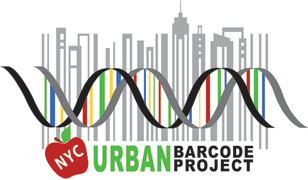High school students to explore wilds of New York City with DNA, win prizes
 On March 8, 2011, scientists and science educators at Dolan DNA Learning Center, Cold Spring Harbor Laboratories, announced the “Urban Barcode Project.” From the website www.urbanbarcodeproject.org :
On March 8, 2011, scientists and science educators at Dolan DNA Learning Center, Cold Spring Harbor Laboratories, announced the “Urban Barcode Project.” From the website www.urbanbarcodeproject.org :
The Urban Barcode Project (UBP) is a science competition spanning the five boroughs of New York City made possible by funding from the Alfred P. Sloan Foundation. Just as a unique pattern of bars in a universal product code identifies each item for sale in a store, a DNA barcode is a DNA sequence that uniquely identifies each species of living thing. In the project, student research teams use DNA barcoding to explore biodiversity in NYC.
Projects can use DNA barcodes to examine any aspect of the NYC environment, such as:
- Sampling biodiversity in a park, garden, office, or school.
- Checking for invasive plant or animal species.
- Monitoring animal movements or migrations.
- Identitying exotic or endangered food products in markets.
- Detecting food or product fraud.
On the website there is a neat 1 min video, a helpful informational brochure, FAQs, and details on $20,000 in prize money!
I am the Scientific Advisor on this project and I think this is a wonderful way for high school students to do science. And one that is likely to inspire efforts elsewhere.
This entry was posted on Tuesday, March 22nd, 2011 at 11:15 am and is filed under General. You can follow any responses to this entry through the RSS 2.0 feed. Both comments and pings are currently closed.
March 24th, 2011 at 11:54 am
Hi, Mark…
I have been following your blog for a while and always enjoy your articles. I would like to get my own kids involved in a project like this, but we live in NC.
I was wondering if there are any private labs that will perform DNA barcoding for individuals not associated with any particular institution. A brief Google search does not reveal any obvious companies providing such services.
Also, I am curious about the average cost of barcoding a specimen.
— BRM